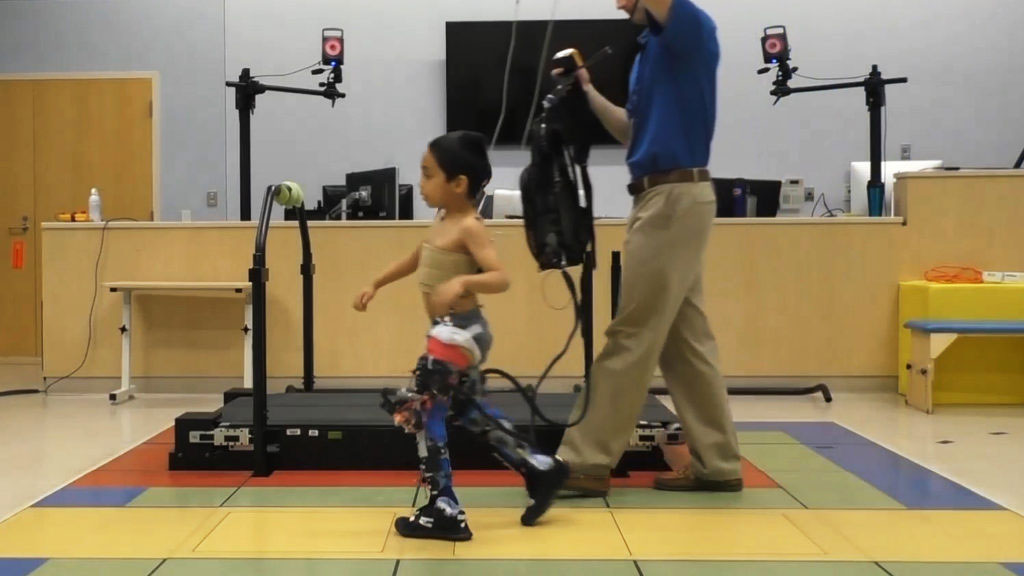This robo-exoskeleton is helping kids with cerebral palsy to walk

A new study has shown great potential for using robotic exoskeletons to physically train young sufferers of cerebral palsy to walk.
Cerebral palsy is an umbrella terms for a range of neurological and movement disorders that develop during early life. According to the Centre for Disease Control and Prevention, it is the most common motor disability in childhood, with global figures “ranging from 1.5 to more than 4 per 1,000 live births or children of a defined age range”.
Sufferers usually walk with their knees in constant flexion, in a gait known as ‘crouch gait’. This basically means that their legs cannot straighten fully as they walk. This is often treated using physical stimulation, injections and surgery.
The problem is that even with the current treatments available, children with the debilitating condition still end up losing their mobility as they approach adulthood. According to the paper published from this study, half of all children with cerebral palsy completely lose the ability to walk by adulthood.
That is a dynamic change
The study, run a team of biomedical engineers of the National Institute of Health, hopes to prove that using robotic exoskeletons could help to train children’s bodies to keep their mobility into later life.
In tests, children who could already walk but suffered badly from crouch gait were given mechanical assistance as specific points in the walk-cycle to straighten their legs. According to the paper, “the exoskeleton dynamically changed the posture by introducing bursts of knee extension assistance during discrete portions of the walking cycle”.
Now for the really cool bit; the results showed that after six sessions, the children demonstrated “increased step length and gait speed”. What’s even more remarkable is that the paper claims: “Six of seven participants exhibited postural improvements equivalent to outcomes reported from invasive orthopedic surgery.”
Sign up for breaking news, reviews, opinion, top tech deals, and more.
While those improvements sound very impressive, the cost of having a robotic exoskeleton for every sufferer of this condition could soon become prohibitive. One of the authors of the paper thinks that this could potentially be unnecessary.
Talking to StatNews, Thomas Bulea, one of the paper's authors, said: “We want to transfer the walking patterns we see with the exoskeleton to walking without the exoskeleton. If we can correct or treat this crouch gait at a young age, then throughout their life, we may be able to increase their mobility.”
There is still much work that needs to be done before this could become a commonplace treatment for this widespread and debilitating condition, but it's fantastic to see advancements in technology able to help those who are most in need.
- If you fancy some more frivolous robotics news, why not check out: This video features more dancing robots than you've ever seen in your life
Via Engadget

Andrew London is a writer at Velocity Partners. Prior to Velocity Partners, he was a staff writer at Future plc.